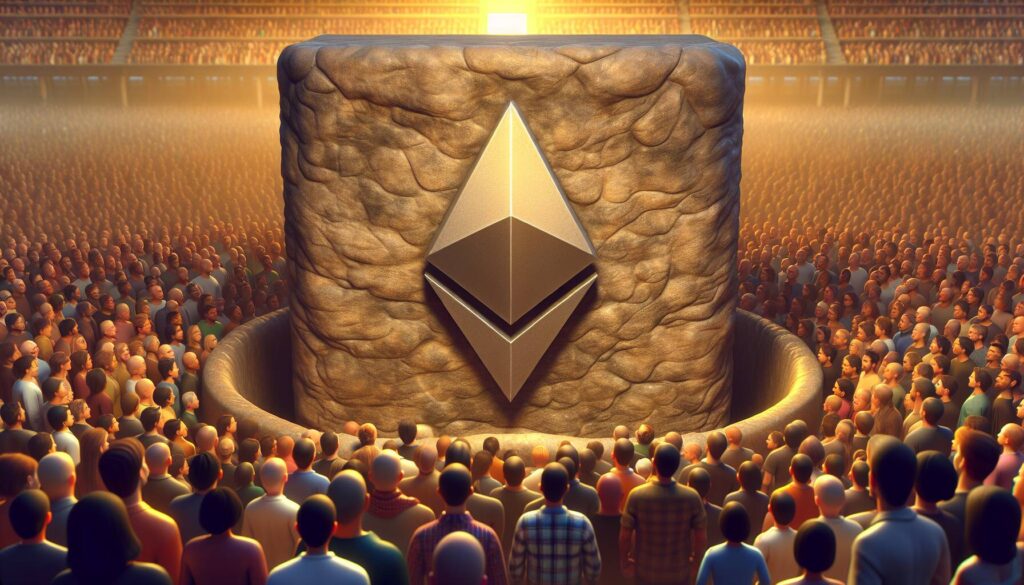The cryptocurrency world is buzzing with significant changes at the Ethereum Foundation (EF), a key player in supporting the development of the popular Ethereum blockchain. In a recent blog post, the EF announced that Hsiao-Wei Wang and Tomasz Stańczak have been appointed as the new co-executive directors. This leadership update comes on the heels of Aya Miyaguchi’s transition to her new role as president of the organization.
This series of shifts occurs amidst ongoing discussions within the Ethereum community regarding the EF’s impact on the blockchain ecosystem, particularly concerning the performance of Ether (ETH), its native token. Some community members have voiced concerns that the EF’s management may be partly responsible for ETH’s recent price stagnation compared to rival cryptocurrencies. Adding to the discourse, it has been reported that Ethereum has seen a decline in new developer sign-ups, a troubling trend when contrasted with its competitor Solana.
Hsiao-Wei Wang, who joined the EF in 2017, has played a crucial role in research efforts, working on vital concepts such as sharding, and has contributed significantly to Ethereum’s recent overhaul known as “the Merge.” Meanwhile, Tomasz Stańczak, the founder of Nerthermind—a renowned client for the Ethereum network—brings his wealth of experience to this new leadership role. The EF’s blog post emphasized the pressing need for the Ethereum ecosystem to evolve from serving a niche audience to becoming a more robust and accessible platform for global finance and software applications.
“Over the next few years, the Ethereum ecosystem needs to navigate the challenging transition from being an early-stage project to being a robust permissionless censorship-resistant base layer of the global finance and software stack,” the Foundation stated.
“The world is ready to come on-chain, and we’re here to do the hard work necessary to make it happen,” Ryan remarked in a recent post.

Key Developments at the Ethereum Foundation
The recent organizational changes at the Ethereum Foundation (EF) mark significant shifts in the leadership and strategic direction of the Ethereum blockchain. Here are the key points to consider:
- New Leadership Appointments:
- Hsiao-Wei Wang and Tomasz Stańczak appointed as co-executive directors.
- Aya Miyaguchi transitions to the role of EF president.
- Community Concerns:
- Intense debates within the community regarding EF’s role in the Ethereum ecosystem.
- Criticism surrounding EF leadership related to ETH’s price performance and developer engagement.
- Wang’s and Stańczak’s Background:
- Wang joined the EF in 2017, contributing to “the Merge” and research initiatives like sharding.
- Stańczak founded Nerthermind, a key software client for Ethereum.
- Strategic Vision for Ethereum:
- The EF’s new leadership aims to transform Ethereum into a global finance and software foundation.
- A focus on transitioning from an early-stage project to a robust ecosystem.
- Formation of New Projects:
- Danny Ryan leaves EF to join Etherealize, a project bridging Ethereum with traditional finance.
- The goal of Etherealize is to educate institutions about Ethereum as a significant crypto asset.
“The world is ready to come on-chain, and we’re here to do the hard work necessary to make it happen.” – Danny Ryan
These developments may significantly impact readers involved in cryptocurrency by shaping the direction of Ethereum, potentially influencing investment opportunities and development initiatives within the blockchain space.
Leadership Changes Shake Up Ethereum Foundation Amidst Market Challenges
The recent announcement from the Ethereum Foundation (EF) regarding the appointment of Hsiao-Wei Wang and Tomasz Stańczak as co-executive directors marks a significant shift in the landscape of one of the largest blockchain networks globally. This transition follows the departure of Aya Miyaguchi, the influential leader who reshaped the foundation’s strategy and public image. However, this leadership change comes at a time when Ethereum faces various challenges, especially in light of competition from platforms like Solana, which has been attracting developers at a faster pace.
Competitive Advantages: Under Wang’s tenure, which includes extensive contributions to significant projects like Ethereum’s “the Merge,” the EF has a leader with a deep understanding of the inner workings and potential of the Ethereum ecosystem. Stańczak’s background, having founded one of the prominent clients in the Ethereum network, adds a complementary technical perspective that could enhance the EF’s strategic direction. Their leadership might also help the foundation tackle community concerns regarding its role and responsibility in the cryptocurrency narrative, particularly as ETH strives to reclaim its stature against rising competitors.
Disadvantages and Community Sentiment: However, the EF has been under scrutiny for perceived underperformance, particularly due to ETH’s lagging price compared to other cryptocurrencies. This has sparked community debates, where many hold the foundation accountable for the lack of new developer interest, creating apprehension about the EF’s ability to fulfill its mission. If this leadership switch fails to revitalize the development landscape or reassure stakeholders about the future of Ethereum, it could lead to further erosion of trust among developers and investors alike.
Potential Beneficiaries and Challenges: For developers and corporations seeking to engage with Ethereum, a revitalized leadership team could signal an opportunity to reinvigorate interest in the blockchain’s capabilities. Initiatives like Etherealize, led by former EF researcher Danny Ryan, suggest a growing connection between Ethereum and traditional finance, which could vastly broaden the market’s reach. Conversely, if the EF’s new leadership cannot communicate a clear and compelling vision or showcase Ethereum’s unique advantages over competitors, it might face significant challenges attracting and retaining top talent and investment.

















